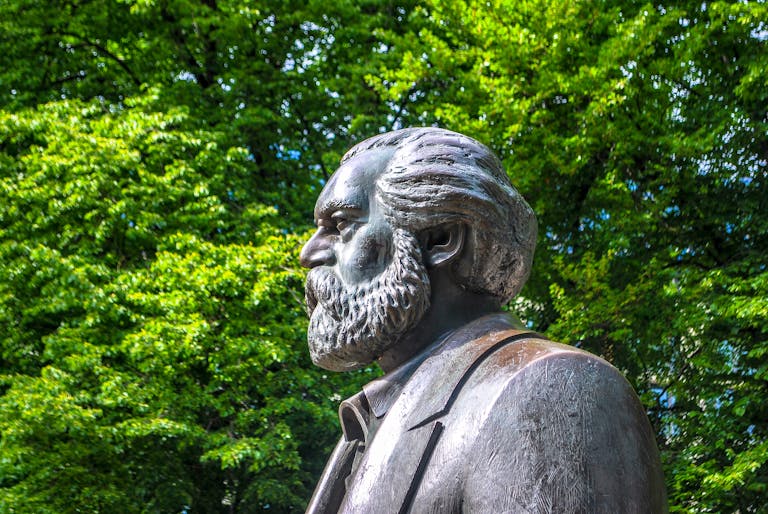Jürgen Habermas on Communication, Democracy, and the Public Sphere in Society

I’ll be honest—I keep coming back to Habermas whenever I think about democracy today. Not because I’m nostalgic for 18th-century coffee houses, but because he gives us a way to link communication with legitimacy. That’s rare. Plenty of thinkers give us theories of power or governance, but Habermas forces us to ask: does democracy actually work without a vibrant public sphere?
And here’s the kicker—it’s not just academic nostalgia. If you look at how misinformation spreads on Twitter, or how citizens in places like Poland or Brazil fight back against authoritarian drift, the quality of public debate really does shape outcomes.
Habermas was already worried about mass media’s colonization of communication, and now we’re facing algorithmic amplification. The man was prescient. So when I say he still matters, I’m not appealing to his reputation. I’m saying: his framework still has teeth for explaining why democracies crack—or survive.
Habermas and the Public Sphere
When Habermas talks about the public sphere, he’s not picturing some vague space where opinions float around. He’s describing a very particular historical formation. In The Structural Transformation of the Public Sphere, he traces how bourgeois society carved out a zone where citizens could meet as equals and argue about matters of common concern. Think London coffeehouses, Parisian salons, or German literary clubs. These weren’t perfect spaces—far from it—but they were experiments in creating dialogue outside state and market control.
The power of rational-critical debate
The heart of Habermas’s argument is that legitimacy in democracy isn’t just about elections or institutions—it’s about the quality of communication between citizens. In the ideal version of the public sphere, participants bracket status differences, make claims that can be publicly tested, and strive toward consensus. Now, experts like us know this “ideal speech situation” is aspirational—Habermas himself admitted it. But what’s interesting is how he links it back to law and power. For him, laws are only valid if they can be justified to everyone through rational debate. That’s a big deal. It means the real engine of democracy isn’t the ballot box—it’s the discourse behind it.
Take a contemporary example: climate policy in the EU. When citizens’ assemblies in places like France gather randomly selected people to debate climate measures, they’re not just giving policymakers advice. They’re operationalizing Habermas’s vision: creating structured spaces for rational deliberation that can then feed into lawmaking. That’s Habermas alive and kicking.
The cracks in the bourgeois sphere
Of course, critics like Nancy Fraser have pointed out the obvious: the public sphere Habermas describes wasn’t inclusive. Women, workers, and colonized peoples were mostly shut out. And Fraser’s idea of counterpublics—parallel spaces where marginalized groups develop their own discourses—really complicates the picture. If anything, that critique actually enriches Habermas’s framework. Because it forces us to ask: what happens when the so-called “public” is fragmented into many publics, each with its own media ecosystem?
If you want a living example, think about Black Twitter. It’s not just a subculture within the larger sphere—it’s a counterpublic that redefines political conversations, often pushing mainstream media to pay attention. That dynamic shows how Habermas’s framework needs updating, but also how his basic concern—who gets heard, and why—remains crucial.
Communication as the foundation of legitimacy
I think what keeps Habermas relevant is his stubborn insistence that communication isn’t decoration in democracy; it’s the foundation. Without spaces for argument, testing claims, and reaching provisional consensus, institutions lose legitimacy. And that rings true whether you’re looking at Brexit debates, Indian farmers’ protests, or online misinformation campaigns.
One striking example is Taiwan’s digital democracy initiatives. Platforms like vTaiwan create structured forums where citizens can deliberate on policy issues. Instead of drowning in noise, the system surfaces consensus points. That’s about as close as we’ve come to institutionalizing the Habermasian public sphere in the digital age.
Media, colonization, and the algorithmic turn
Habermas also warned us about something that now feels prophetic: the colonization of the lifeworld by media and money. When commercial interests dominate communication, the possibility for rational debate shrinks. We see this now with algorithms privileging engagement over truth. Facebook’s role in Myanmar’s ethnic violence or YouTube’s radicalization spiral are not just “tech glitches”—they’re structural distortions of the public sphere.
And yet, even here, Habermas gives us a lens. If democracy’s lifeblood is deliberation, then the question becomes: how do we design communication infrastructures—digital or otherwise—that resist colonization? That’s not just a tech question, it’s a deeply normative one. And it’s where political theory and computer science actually need to start talking to each other.
Beyond nostalgia
So no, I don’t think we should romanticize the 18th-century coffeehouse. They were exclusionary, elitist, and far smaller than Habermas sometimes suggests. But as a model for thinking about communication as the engine of democracy, they still work. The point isn’t to rebuild coffeehouses—it’s to ask how new platforms, forums, and assemblies can replicate their best features: openness, rational debate, and accountability.
That’s why Habermas still gets under our skin. He doesn’t let us off the hook by saying “democracy is what the majority votes for.” He keeps insisting that democracy is what happens when we talk to each other seriously—and that’s a radical claim in an age of memes and misinformation. If we ignore it, we risk hollowing out democracy into nothing more than procedure. And if we take it seriously, we might just find better ways to design the spaces where democracy lives.
Key Features of Communicative Democracy
Whenever I explain Habermas’s idea of communicative democracy, I like to break it down into core features. Otherwise, it can feel like we’re just juggling abstract terms. What makes his approach powerful is how it connects real democratic legitimacy with the quality of our conversations. And for me, the exciting part is seeing how these features play out—sometimes beautifully, sometimes messily—in the world we live in.
Normative foundations of discourse
At the root of communicative democracy is discourse ethics. This isn’t about everyone being nice—it’s about structuring communication so that claims can be tested by reasons rather than power. Think of it as a moral operating system. Habermas argues that for a claim to hold legitimacy, it has to be open to challenge by all participants.
Now, you might say that’s idealistic. Sure, but look at constitutional courts in places like Germany or South Africa. They often justify rulings by appealing to principles that could, in theory, be accepted by all citizens—even when those citizens disagree politically. That’s Habermas in legal practice.
Legitimacy through communication
This is the part I find most radical: law isn’t legitimate because it’s enforced by the state, but because it can be justified through public reasoning. Habermas flips the usual assumption. It’s not about the monopoly on violence—it’s about the monopoly on persuasion.
An example: Ireland’s Citizens’ Assembly on abortion reform. Instead of just pushing through a divisive issue via parliamentary maneuvering, the process deliberately created a public forum for deliberation. Citizens debated evidence, heard testimonies, and engaged experts. The eventual referendum carried more legitimacy precisely because the groundwork of communication had been laid. That’s the Habermasian logic in action.
Inclusivity and access
One of the toughest challenges is ensuring who gets into the conversation. Habermas’s original public sphere wasn’t inclusive enough, and critics made sure he never lived that down. But his later work does push for broad, open participation.
Today, digital platforms complicate this. On one hand, Twitter or Reddit let anyone with Wi-Fi jump in. On the other hand, algorithms gatekeep whose voices rise to the top. Inclusivity isn’t just about being allowed in—it’s about having equal visibility and weight once you’re inside. For instance, Brazil’s participatory budgeting experiments in Porto Alegre deliberately designed processes to balance voices, ensuring poorer citizens weren’t drowned out by elites. That’s inclusivity as a design problem.
Tension with power and media
Habermas was always worried about media turning into a vehicle for manipulation. The shift from a public press to corporate-dominated media was, in his eyes, the beginning of a decline in rational debate. And now, with algorithmic media, the tension has exploded.
Consider the Cambridge Analytica scandal. Here was a private firm manipulating communication flows on Facebook, not by engaging in debate but by microtargeting emotional triggers. That’s precisely the colonization of communication Habermas warned us about. It reveals how fragile deliberation is when commercial logics dominate.
The evolving digital sphere
We can’t talk about the public sphere today without acknowledging the internet. It’s messy, fragmented, and polarized—but it’s also the most Habermasian thing we’ve ever built, in potential if not practice. Where else do you see millions of strangers engaging in arguments about politics, culture, and law?
Examples abound. The Arab Spring showed how digital communication could catalyze political mobilization. But the same platforms have also been breeding grounds for conspiracy theories. It’s both the best and worst-case scenario for Habermas. Which is why I think the digital sphere forces us to rethink his categories, without abandoning them.
Contemporary Challenges and Applications
So what happens when we take Habermas’s framework and drop it into the twenty-first century? Spoiler: it gets messy, but it also opens up some fascinating possibilities.
Digital democracy and algorithmic governance
One of the biggest shifts since Habermas wrote is the rise of digital platforms as the de facto public sphere. Here’s where things get tricky. On the one hand, platforms like Twitter, TikTok, or Mastodon can look like ideal forums for communicative action. On the other hand, their architecture privileges virality, outrage, and brevity over deliberation.
Take disinformation campaigns during the COVID-19 pandemic. These weren’t just side-effects—they revealed a structural weakness in our communication infrastructures. Rational-critical debate was swamped by noise, conspiracy, and algorithmic amplification. Habermas didn’t predict TikTok, but his framework helps us diagnose why deliberation failed: the rules of discourse were rigged.
Yet, there are counter-examples. Taiwan’s vTaiwan platform I mentioned earlier uses AI-assisted deliberation to filter thousands of citizen comments into clusters of agreement. That’s a glimpse of how technology could be designed to enhance, not undermine, communicative action.
Fragmentation and counterpublics
Another challenge is fragmentation. Instead of one public sphere, we have countless publics and counterpublics. Is this a weakness or a strength? I’d argue both.
Look at feminist counterpublics online, or Indigenous media collectives. These spaces don’t just mirror the mainstream—they generate their own discourses that eventually reshape wider debates. Fraser’s critique of Habermas reminds us that counterpublics are necessary when dominant publics exclude voices. But the risk is balkanization—when publics stop talking to each other at all. The U.S. polarized media ecosystem is a textbook case.
Globalization of the public sphere
Habermas mostly thought in national terms, but the world we’re in now demands a global view. Climate change, migration, and financial crises don’t respect borders. So can a Habermasian public sphere exist at a global scale?
Consider the Paris Climate Agreement negotiations. Civil society groups, scientists, and activists from around the world contributed to shaping not just policy but the moral framing of climate justice. That’s as close as we get to a global public sphere. Still, the lack of binding enforcement shows how fragile legitimacy becomes when it’s stretched beyond the nation-state.
New forms of communicative action
I get excited when I see democratic innovations that embody Habermas’s spirit without copying his models. Citizens’ assemblies, participatory budgeting, and even experiments in online deliberation all point toward a more communicative form of democracy.
But we can’t be naïve. Deliberation is fragile. It requires careful design, facilitation, and sometimes even protection from hostile forces. When authoritarian regimes flood the digital space with trolls or bots, they’re not just censoring—they’re actively sabotaging communicative action. That’s a twenty-first-century twist Habermas couldn’t have anticipated but would immediately recognize.
The viability of deliberation in polarized societies
Here’s the million-dollar question: is deliberative democracy even viable in today’s polarized societies? Honestly, I think the answer depends on whether we treat polarization as a reason to abandon deliberation or as a reason to double down.
Take the U.S. January 6 hearings. They weren’t perfect, but they functioned as a public forum where evidence and arguments were laid out systematically. Millions tuned in, and the hearings shaped public opinion more than most pundits expected. That’s deliberation under pressure—messy, contested, but still meaningful.
Final Thoughts
Habermas doesn’t give us easy answers, but he does give us the right questions. What counts as legitimate communication? Who gets to participate? How do we resist the colonization of discourse by money and power?
For experts like us, the value isn’t in treating Habermas as a gospel but as a living framework. The public sphere is changing—it always has been—but the need for spaces where rational debate underpins legitimacy hasn’t gone away. If anything, it’s more urgent than ever. And that’s why, whether we’re talking about eighteenth-century salons or twenty-first-century platforms, Habermas still sits at the table with us.





